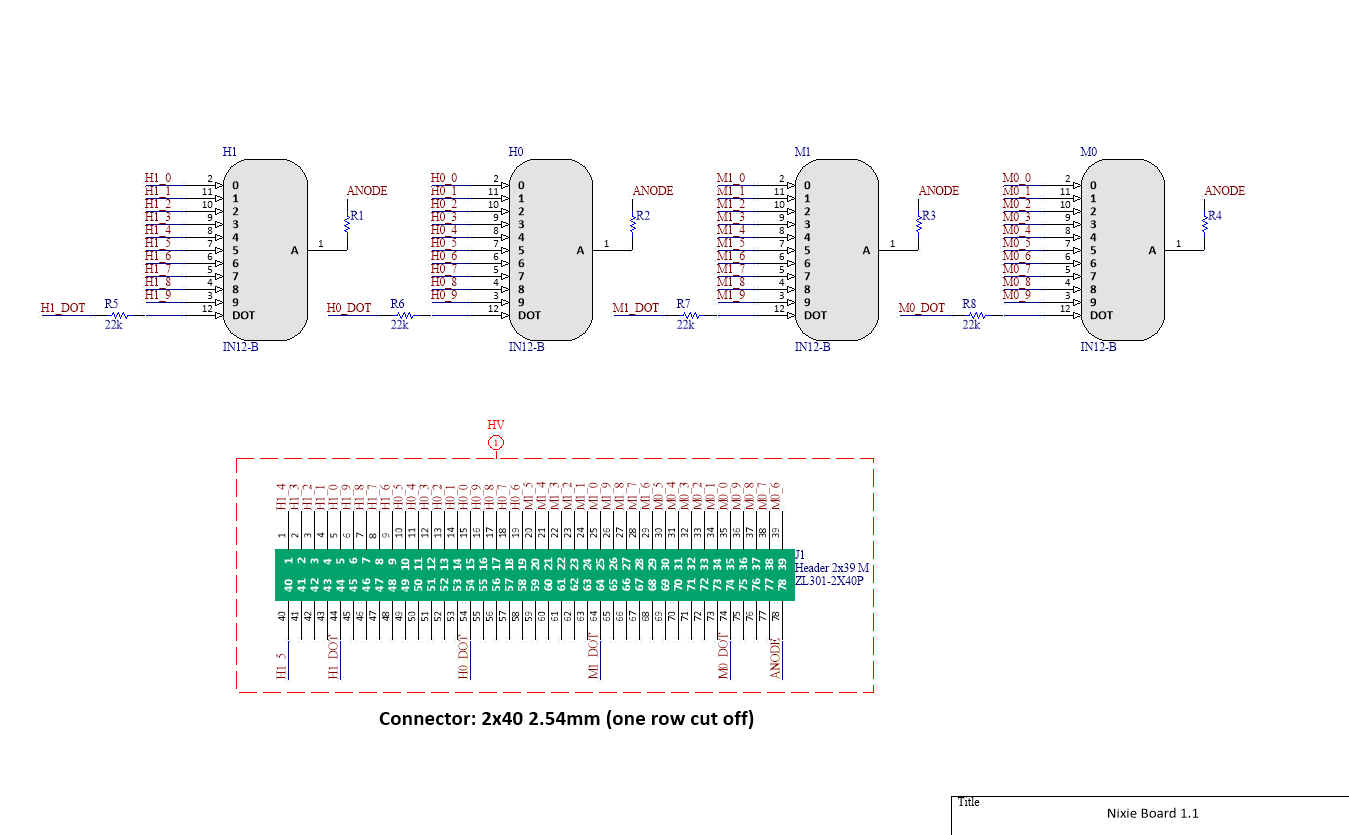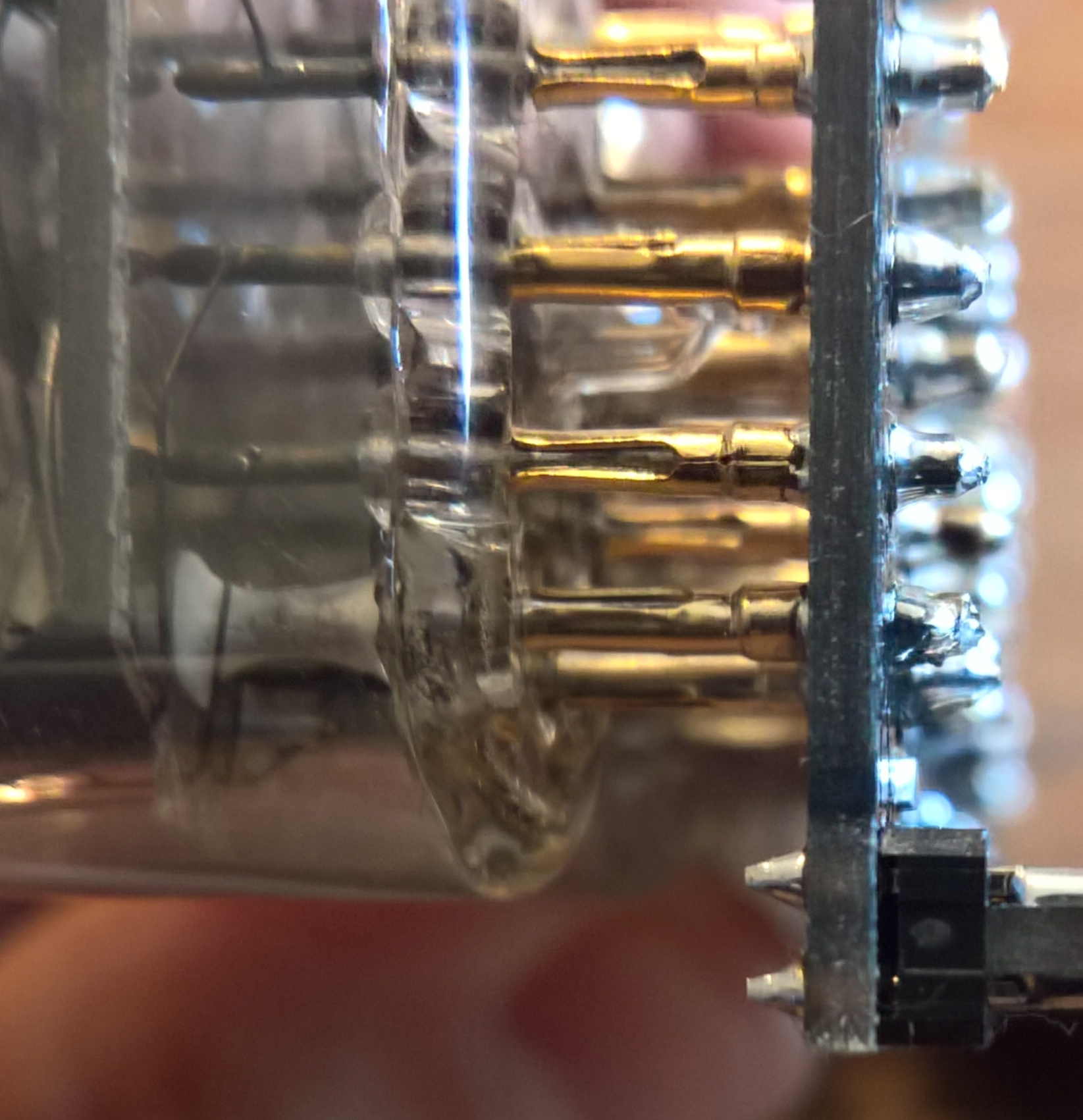This project is designed around IN-12B nixies (same as IN-12A but with a decimal dot in front of the number). Its compact size makes this tube perfect for a desktop display application.
To make a Nixie, you take conductors shaped like numbers and place them in a Neon - filled glass tube. When the voltage across conductors gets over a certain threshold (striking voltage), gas around the conductor will light up, due to corona effect.
In principle there are two ways to drive a Nixie:
- direct drive
- multiplexing
In practice, multiplexing uses fewer pins, but may suffer from audible noise, because the nixie is a mechanical beast which can behave like a speaker due to vibrations.
Since I don't want my clock to buzz at me, I opted for a direct drive strategy.
To sustain the digit glow, a sufficient current needs to flow through the tube. Based on the tube datasheet and experimentation, the circuit is currently tuned to the following operating point:
- Anode voltage: 170 V
- Sustain voltage: 130 V
- Digit current: 1.8 mA (this might be too low, datasheets recommend 2-3.5 mA)
- Dot current: 0.2 mA (this might be too low, datasheets recommend less than 0.7 mA)
This is what the schematic for that part looks like:

Here I found three options:
- NOS single piece sockets
- Generic 1mm tube pin sockets
- Specialty brand name ~1mm sockets (e.g. HARWIN H3153-01)
NOS single piece sockets have a huge advantage when it comes to PCB assembly. These sockets are held together by some sort of resin, which makes soldering easier. However, they are relatively bulky, and I wanted to stay away from NOS as much as possible.
Generic pin sockets are readily available, cheap, but probably require hand soldering, so this option may end up being more expensive than NOS option. In any case I chose this option:

Brand name sockets are also an option, but I gave up on these, as they are more expensive than generics.
 mladen
mladen
Discussions
Become a Hackaday.io Member
Create an account to leave a comment. Already have an account? Log In.
you can check out my build log https://goo.gl/photos/xAqDbSyT5gKFA5jb8
Are you sure? yes | no
another front view tube is IN-4, is round and similar in size :)
Are you sure? yes | no
that one is maybe even cuter than in-12 :)
Are you sure? yes | no